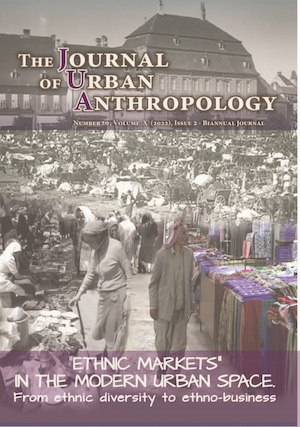Hucksters’ polyglossia: “hostanys”, “pems” and “fribourgers”: an incursion into vendors’ discourse in multilingual markets
Hucksters’ polyglossia: “hostanys”, “pems” and “fribourgers”: an incursion into vendors’ discourse in multilingual markets
Author(s): Cora SAURER-CHIOREANUSubject(s): National Economy, Cultural Anthropology / Ethnology, Culture and social structure , Social development, Social differentiation, Financial Markets, Ethnic Minorities Studies
Published by: EDITURA OSCAR PRINT
Keywords: polyglossia; peasant markets; Pems; Swabians; Fribourgers; Hoștăzeni;
Summary/Abstract: The seller’s adjustment to the buyer or the buyer’s friendly attempt to haggle with the seller in different languages could help optimise a transaction. Communities with traditional market vendors, such as the Hoștăzeni, the Pems, the Swabians and the Fribourgers provide a touch of local colour to the markets in their respective cities. For the local world, they still symbolise a world of goods and production that is starting to disappear. The ethnic fairs and markets’ changes in form, volume and the target audience can hasten their disappearance.The above is the case with Christmas markets, which, unfortunately, are almost identical in many of the towns that host them. What makes multilingual markets different? The appeal to the consumer, and the inter-relationships built up over time. In the markets, the customer for the buyer, the client is the absolute target. Very often, the customer becomes interested in visiting the place as a socio-linguistic interaction corner. We all go to the market to talk to each other; we all go to the supermarkets to quickly buy goods. This richness lies in the discourse of the vendors, in the way they adjust their language and non-verbal skills.This study is devoted to similar discourses in multilingual markets and some contradictory ones, where multilingualism joins polyglossia. It also looks for the difference and similarities in how these acts of language ensure the existence of the markets, thus influencing their evolution and the presence of customers by applying certain linguistic and sales performances.
Journal: THE JOURNAL OF URBAN ANTHROPOLOGY
- Issue Year: 10/2022
- Issue No: 20
- Page Range: 133-151
- Page Count: 19
- Language: English
- Content File-PDF

